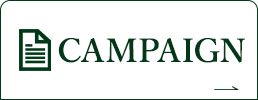The tip of the nose is raised and the bridge of the nose is cleared to create a refined nose.
"Preservation rhinoplasty" that has been sweeping Europe and the United States since 2018 is now combined with the "structure rhinoplasty" advocated by Dean M. Toriumi of the United States in 2024 and "hybrid rhinoplasty" has become the global trend of rhinoplasty.
Asian and Japanese people with small noses are good candidates for "hybrid rhinoplasty". The low nasal tip is structurally raised, the nasal bridge is pushed down with "preservation rhinoplasty" in the convex part and the low part such as between the eyebrows is filled with tissue for the nasal bridge.
Rhinoplasty for a wide nose may result in a large nose that does not balance with the overall appearance so a nasal osteotomy is performed to clear the nasal bridge. We offer rhinoplasty for Asian and Japanese patients (Asian Rhinoplasty).
We perform tissue-sparing "preservation rhinoplasty" procedures to reduce postoperative downtime and the risk of scarring.
Since we have performed many "preservation rhinoplasty" surgeries, we also specialize in "reduction rhinoplasty" to reduce the size of large noses, such as hump reduction for caucasians.
A High Nose Tip
1. Nasal Septum Extension
The height and angle of the nasal tip is corrected by grafting cartilage to the nasal septum cartilage, which serves as the pillar of the nose and fixing it to the cartilage of the nasal tip (greater nasal wing cartilage). The short noses are corrected in a caudal (extended) direction, while the long noses are corrected in a cephalic direction.
We believe that this is a very suitable method for determining the position of the nasal tip in "Asian Rhinoplasty". The grafted cartilages used are rib cartilage and nasal septum cartilage.
2. Nose Tip Lifting
This is a method of shaping the cartilage of the nasal tip into an anatomical shape (Cakir's polygon concept), the skin covering the cartilage and the external nose. Many Asians have a rounded and indented nasal tip, which is corrected to a neat cartilage shape using a suture technique that stitches the cartilage.
3. Cartilage Grafting
Even with methods 1 and 2, it may not be possible to achieve the height, length and angle of the tip of the nose that matches the nasal bridge in cases where the tip of the nose is naturally low or short. In this case, the nasal tip is formed by grafting cartilage or fascia to the apex of the nasal tip. We feel that it is often difficult to achieve a sophisticated impression by grafting cartilage to the tip of the nose in order to create a high nose tip. In our clinic, we are conscious of the anatomical shape of the nasal wing cartilage (polygon concept) when performing cartilage grafting. We use auricular(ear) cartilage, nasal septum cartilage and rib cartilage.
Straight Nose Bridge
Rhinoplasty with prosthesis
In Asian noses, the overall low nose angle is often a problem. Especially when the area between the eyebrows is made high enough to fit the bone structure, the impression of a straight nose is created. A prosthesis is one effective method that does not sacrifice one's own tissue. We use both standard prostheses and custom-made prostheses for each individual patient to create the nasal bridge.
Rhinoplasty with autologous tissue
For those who are not comfortable with prostheses, or are concerned about long-term outcomes, or desire a natural-looking rhinoplasty, we offer rhinoplasty using autologous tissue from cartilage or fascia grafts. In most cases, we use finely ground cartilage. Fascia can be harvested from the rectus abdominis (abdominal) fascia when harvesting rib cartilage or from the temporal region. In men, the fascia from the thigh may be taken in a position hidden by underwear. In cases where the nasal bridge is to be further enhanced, hyaluronic acid or fat injections into the forehead may be recommended to match the height of the nasal bridge.
Eagle Nose Correction
This is one of the procedures to reduce the size of a large nose. In the past, the open roof technique was used to remove the protruding nasal bones and cartilage. However in recent years, by using the concept of "preservation rhinoplasty", the nasal bones of the roof are removed by osteotomy and the nasal septum cartilage is removed from the pillar to push the entire nose down.
This method has the advantage of narrowing the width of the nose. This method has the advantage of narrowing the width of the nose. The Asian nose can have a low space between the eyebrows, even though the nose is eagle-shaped. In this case, a prosthesis may be used to mask the protrusion, but the entire nose will be enlarged, giving a blurred impression. In many cases, our clinic performs rhinoplasty to raise the eyebrow area after correcting the eagle nose.
Nasal Osteotomy
Asian nose may have a wide and flat nose. Nasal osteotomy can be used to narrow the width of the nose and form the nasal bridge. Raising the bridge of the nose by rhinoplasty can also be used in combination. There are a wide variety of nasal osteotomies available today, including lateral, medial and transverse osteotomies. External osteotomies are performed from inside the nose in our clinic. By performing the osteotomy from inside the nose, the osteotomy is more reliable than when performed percutaneously from the outside. All patients who undergo nasal surgery are required to undergo CT imaging. We use an osteotomy method that meets your wishes while verifying the CT images.
Slim nose
Nasal Wing Reduction
After the tip of the nose and the bridge of the nose are formed, the shape of the nose wings may become a concern. In this case, nasal wing reduction is performed. The outer and inner sides of the nose are cut away and the shape of the nose is corrected dynamically by rotation and advancement.
We do not separate the inner and outer noses but perform them as a series of surgeries because we decide the part to be removed while looking at the shape of the tip of the nose and the nasal bridge.
Retracting Nostril Rim
After the tip and bridge of the nose have been formed, drooping of the nose may be a concern. In this case, the skin of the nose may be excised vertically. This method is effective for shaping the face seen from the side. If the nose appears to be cut up, auricular(ear) skin and cartilage may be transplanted into the nose to lower the nose.
Lifting the Base of the Nose
Even after nasal septum extension, the Asian nose may still have a sinking sensation due to skeletal problems. In such cases, we may choose to lift the nose from its base by a method called "cat and nobility surgery" or paranasal augmentation.
Tissue graft at the base of the nasal column
The most common method is to inject cartilage particles under the skin at the base of the nasal bridge. The graft is injected through the nasal incision line. In our practice, we also often push up the anterior nasal spine by sewing cartilage to the nasal septum cartilage in conjunction with a nasal septum extension. The postoperative result is more predictable than with injections and gives the impression of a sharp lift.
Tissue graft to the base of the nasal wing
In most cases, an incision is made within the nose to lift the base of the nose. In our clinic, most of our nasal osteotomies are performed from within the nose, so in osteotomy cases, we inject through that incision line.
Revision Surgery after Rhinoplasty
Recently, more and more people are undergoing rhinoplasty in Japan. In proportion to this, the number of patients requesting revision surgery is also increasing. There are two types of revision surgeries: cases where deformity has been caused by the surgery and cases where the desired shape has not been achieved after the surgery. We believe that the difficulty of revision surgery depends on the extent of the surgery received, the degree of surgical invasion and infection. Because we perform functional nasal reconstruction, we are able to handle even the most severe cases of structural collapse. There is a wide variety of reconstruction methods but rib cartilage is often used in cases where significant reshaping is required. In cases where the nose has contracted due to infection, it may be necessary to first improve the skin condition before reconstructive surgery can be performed.
Nasal Hyaluronic Acid Injection
Hyaluronic acid injection is performed for those who are not comfortable with surgery or who wish to simulate it by fillers first. By forming the tip of the nose with hyaluronic acid, "liquid rhinoplasty" is safer and more effective than conventional injection methods. Although hyaluronic acid injections into the nasal tip have been considered dangerous, we inject into the membranous nasal septum between the greater nasal wing cartilage and the nasal septum cartilage to lift the tip of the nose. In cases where the nasal bridge is to be raised, it can be injected over the cartilage membrane and over the periosteum to safely form the nasal bridge. Hyaluronic acid will absorbed to the body as time goes by so the effect is not permanent and requires consistent visits.
Postoperative progress and precautions
A blood drain tube may be placed in the nose. The timing of drain removal depends on the nature of the surgery. A silicone plate may be placed inside the nose to prevent nasal septal hematoma. If an osteotomy is performed, a cast is placed on the external nose. These will be removed at the time of suture removal one week after the surgery.
The swelling from the surgery, the drain and the silicone plate that are placed inside the nose will give the patient that the feeling of nasal congestion seems to be worse than before the surgery. However, at the time of the stitch removal, all of these will be removed and the congestion will improve. The swelling often gets better as the nasal congestion gradually improves, which will take about a month after the surgery. Prominent swelling will largely subside about 2weeks after the surgery.
The cast should be worn all day for one week after the surgery. For the week after that, the cast should be worn only at bedtime. In some cases, the patient may be asked to wear a retainer, a brace that is placed inside the nostrils. Blowing the nose is prohibited for one month after the surgery. It is recommended to clean the nose with a nasal gargle or nasal rinsing.
Bleeding
Hematomas may form in the nasal septum. If not treated, it can cause infection and deformity of the corrected nasal area.
Infection
The inside of the nose is a passageway for air and therefore, the patient is exposed to bacteria while undergoing surgery. In most cases, infection does not occur but it can occur in cases of multiple surgeries, smoking, sinusitis, tooth decay or frequent touching of the affected area with a cotton swab or hand due to stiffness or discomfort in the nose post-surgery. In some cases, treatment can minimize infection and stave off deformity but in other cases, it may result in significant deformity.
Deviation
Rhinoplasty is a corrective surgery that changes the shape from its original form. In some cases, the nose may become crooked after the surgery. Some people may also experience pain and discomfort due to the stiffness of the nose as a result of the correction. It is important to understand that the nose will be stiffer than it was before the surgery, no matter the extent of the surgery.
Image Differences
There may be discrepancies between the postoperative images of the patient and the surgeon. In order to prevent discrepancies in images, a preoperative consultation using a VECTRAⓇ camera and simulation software is performed upon request (Note: an additional fee is required). While palpating the nose, we will create a nose that is as feasible as possible on the software. In an actual surgery, the size and strength of the cartilage, the thickness of the skin, and the degree of extension may affect the result. We believe that simulation is only one of the resources. We will discuss this with you during the counseling session. We perform surgery to provide the best nose shape for our patients by closely exchanging information with renowned nasal surgeons overseas.












